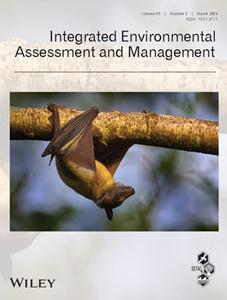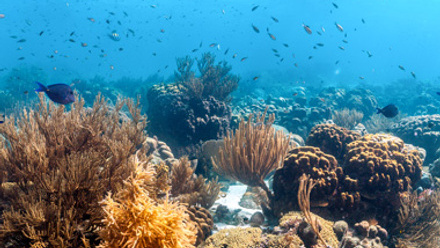Wildlife Risk Assessment in the 21st Century: Integrating Advancements in Ecology, Toxicology and Conservation
Mark S. Johnson, Workshop Co-Chair and SETAC North America Board of Directors Vice President
Chemical management schemes around the world rely on wildlife risk assessment, which in turn rely on the ever-evolving field of wildlife toxicology. Subsequently, as biological science improves our understanding of shared processes, so should the use of emerging science to inform and even alter methods of wildlife ecological risk assessment (WERA). However, guidance to evaluate risk to wildlife from chemical exposure has not changed markedly in decades, despite the availability of new scientific tools and approaches.
Recently, potential improvement on methods for estimating risk of chemical exposures for terrestrial wildlife were identified and summarized by a group of multidisciplinary, multistakeholder SETAC members, who worked under the framework of a SETAC workshop (the WERA Workshop Team) beginning in 2021 to evaluate and assess how scientific advancements could improve and better inform environmental decision-making. The team aimed to evaluate emerging methods, evaluate those that may have applicability, and then seek whether current practices, guidance, policies and regulations are consistent with their use. The workshop output is now published in a series of seven articles, soon to be published as a Special Section in Integrated Environmental Assessment and Management titled, “Wildlife Risk Assessment in the 21st Century: Integrating Advancements in Ecology, Toxicology, and Conservation.”

In the first article in the series, “Integrating emerging science to improve estimates of risk to wildlife from chemical exposures. What are the challenges?” van den Brink et al., describe how the team approached their goal and summarized the outputs of their work. Knowing that wildlife risk assessment is applied in various regulatory environments, to focus on possible advances in conducting wildlife risk assessment, the WERA Workshop Team focused on regulations found in Canada, the European Union and the United States. The team reviewed the regulations and identified challenges risk assessors and managers encounter while applying them. The team then devised recommendations to integrate scientific advances into wildlife risk assessment in each component of the process, which is problem formulation, exposure assessment, effect assessment and risk characterization. Some of these recommendations identified by the WERA Team can immediately be deployed, while others require advancement in research and development. Specifically, advancements in ecotoxicology are required to enable improvements in the exposure and effects assessments components of the WERA process. The workgroups identified challenges risk assessors encounter in each of these steps and then devised recommendations to address them. That work is summarized in five articles:
- Key challenges and developments in wildlife ecological risk assessment: Problem formulation (Sample et al.)
- Advancing exposure assessment approaches to improve wildlife risk assessment (Morrissey et al.)
- Toxicological effects assessment for wildlife in the 21st century: Review of current methods and recommendations for a path forward (Bean et al.)
- Wildlife ecological risk assessment in the 21st century: Promising technologies to assess toxicological effects (Rattner et al.)
- Interspecies scaling of toxicity reference values in human health versus ecological risk assessments: A critical review (Clewell et al.)
In the last article in the series, “Using Emerging Science to Inform Risk Characterizations for Wildlife Within Current Regulatory Frameworks,” Johnson et al., summarize and compare wildlife risk assessment guidelines under various jurisdictions and seeks to understand whether current policy and regulations were consistent and flexible to support its use. The authors conclude that within these jurisdictions, the use of emerging science is consistent with current policies, although mostly in higher tiered applications. New methods could indeed provide greater precision for risk assessments, although may require a greater degree of scientific rigor and understanding specific to each application. The authors also suggested that while many policies allow for the use of alternative lines of evidence to support decision‐making, the relative confidence in using those tools and their application varies. The authors note that “the relative level of confidence and subsequent use of new methods and tools will depend upon cooperation between their developers, those in positions to support their use, and those that generate the data required for risk characterization.” It will also require educated practitioners who are confident with the output of these new tools to effectively utilize them to move away from long‐time conventional approaches. As an example, the authors state that moving toward probabilistic risk assessment will require changes to the way in which ecotoxicity studies are conducted and that responsible parties, risk managers and regulatory personnel become knowledgeable and comfortable with the science.
A SETAC Technical Issue Paper summarizing this body of work will be issued soon to accompany the journal series. This work is being publicized to encourage risk assessors in all sectors to embrace some of these recommendations and advance the methods used in wildlife ERA to advance chemical management and improve environmental health globally.
Acknowledgment:
This workshop occurred during a pandemic where in-person meetings and conversations were not possible. We greatly thank the steering committee and the contributions of many individuals who withstood multiple virtual meetings and discussions and subsequently authored the series or otherwise contributed to it. Financial support for the workshop was provided by the U.S. Department of the Interior, U.S. Geological Survey, Teck Resources Ltd., and SETAC.
Author's contact: [email protected]



